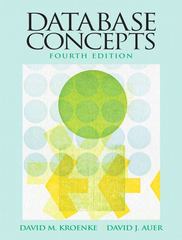Question
Consider a simple queuing system in which customers arrive randomly such that the time between successive arrivals is exponentially distributed with a rate parameter =
Consider a simple queuing system in which customers arrive randomly such that the time between successive arrivals is exponentially distributed with a rate parameter = 2.8 per minute. The service time, that is the time it takes to serve each customer is also Exponentially distributed with a rate parameter = 3 per minute. Create a Matlab simulation to model the above queuing system by randomly sampling time between arrivals and service times from the Exponential Distribution. If a customer arrives and there is a queue, then the arriving customer joins the line and waits until her turn comes to be served (i.e. first come first serve queueing system). Assume system starts empty at t=0 and t=0 is when the first arrival happens. Run the simulation for 50 hours (i.e. stop the simulation at t=3000 minutes) and estimate the average waiting time per customer. Using the simulation results, also estimate probability that a customer has to wait longer than (a) 5 minutes; (b) 10 minutes and (c) 30 minutes. Just to give example of how the simulation would run, suppose the time between successive arrivals is randomly generated to be 3, 1, 4, 8, 2 for the first 6 arrivals. Since the first arrival happened at time 0, the second arrival would be at t = 0 + 3, the third arrival at t = 0 + 3 + 1, the fourth at t = 0 + 3 + 1 + 4, and so on. Similarly, you can randomly generate service times for each customer and thereby generate when each customer completes their service, and what the waiting time for each customer is. To continue with the above example, if the service time for the first customer was 8, then the second customer will wait for 5 time units, since the second customer arrived at t=3 but had to wait until time t=8. The third customer will have to wait until the second customer finishes and so on. Your Matlab simulation will keep track of all this until the simulation clock closes at t=3000. Then you can estimate all the statistics Ive asked for above.
Step by Step Solution
There are 3 Steps involved in it
Step: 1

Get Instant Access to Expert-Tailored Solutions
See step-by-step solutions with expert insights and AI powered tools for academic success
Step: 2

Step: 3

Ace Your Homework with AI
Get the answers you need in no time with our AI-driven, step-by-step assistance
Get Started


